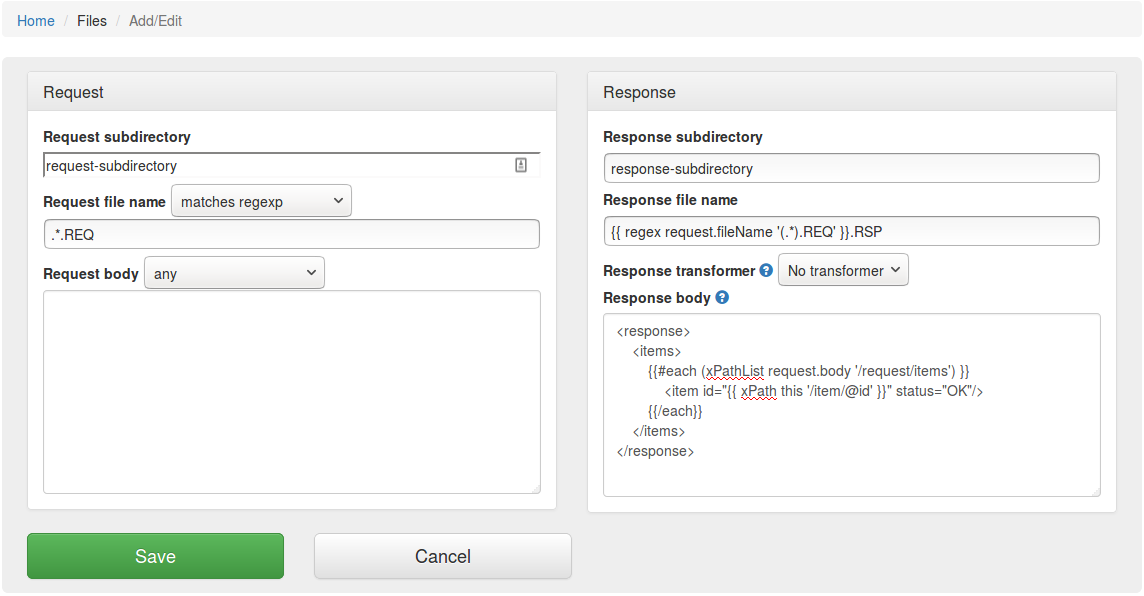This raises issues like:
- Setting up test data in the third party or backend systems slows down developers and testers on your team
- Creating response files based on request files without the third party or backend system is done manually
- Creating files manually will not work when you are running automated tests
- Crafting files manually is error-prone
- Crafting files manually is time-consuming
- Sometimes response files need to be present within only a few seconds because the application times out otherwise, so there is no time to create them manually
 |
| Simulating systems communicating with files |
- Consume request files
- Produce response files
- Record and replay communication with files
- Create manually request to response file mappings
- Generate dynamic response file names (scriptability)
- Generate dynamic response file content based on request file content (scriptability)
 |
| Example of a request to response file mapping |
For more information have a look at the files transfers documentation.


No comments:
Post a Comment